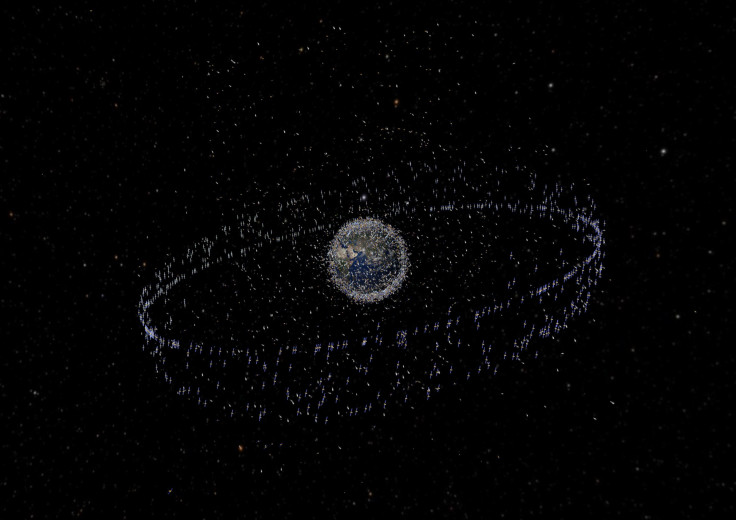Radio Waves To Help Track Space Debris, Dead Satellites

Space junk — tiny bits and pieces of retired rockets and space stations — is one of the biggest threats to the future of spaceflight, be it a simple spacecraft launch or a crewed mission, such as one to the red planet.
Dead satellites, which have accumulated in orbit since the dawn of the space age, can crash into each other or into operational satellites, affecting communication or military-related networks established by different nations.
The effect of such an encounter would be catastrophic because the collision would not just harm ground systems but also create more flecks, further adding to the problem of debris. At the moment, we have some 7,500 tonnes of space debris, hurtling at nearly 17,500 miles per hour, to deal with.
Scientists across the globe have suggested different clean-up techniques, but many have also stressed on the importance of tracking the movement bigger pieces of junk – so that further collisions can be avoided in time.
This is why an international team of scientists, led by researchers at Australia’s Curtin University, developed and launched a ground-based early warning system that could use FM-band radio waves – radio station signals that carry music, news to the public – to provide an idea of where space junk is moving in space.
"Obviously those FM transmissions make their way to our car radios and that's how we listen to music and whatever, but a lot of that radio wave energy is transmitted into space, and a very small fraction of it is reflected off space junk," Steven Tingay, the lead researcher behind the project and chief investigator in the Australian Research Council Centre for All-sky Astrophysics (CAASTRO), told Xinhua.
As these small number of waves reflect off the objects, the team’s sophisticated radio telescope – Murchison Widefield Array – in western Australia will be able to detect the signal and provide information about the objects in question.
"We can detect that reflected signal with our radio telescope and track where it is in the sky, using that information to give some level of warning about possible collisions." In the past, the group had tracked 10 pieces of space junk simultaneously using the same technique.
While scientists have established optical methods to observe and track the movement of space debris, this particular method, as the researchers said, offers a better and more affordable alternative compared to the conventional radars.
More importantly, as it uses FM radio transmission, which is beamed throughout the nation, the method works all the time and is not affected by cloud cover as seen in the case of optical telescopes.
Positioned at the Murchison Radio-astronomy Observatory, the MWA was developed under an international collaboration as one of three precursor telescopes for the futuristic Square Kilometer Array – a multibillion dollar radio telescope with a collecting area of approximately one square kilometer. The construction of the massive telescope will begin in 2019.
© Copyright IBTimes 2024. All rights reserved.





















